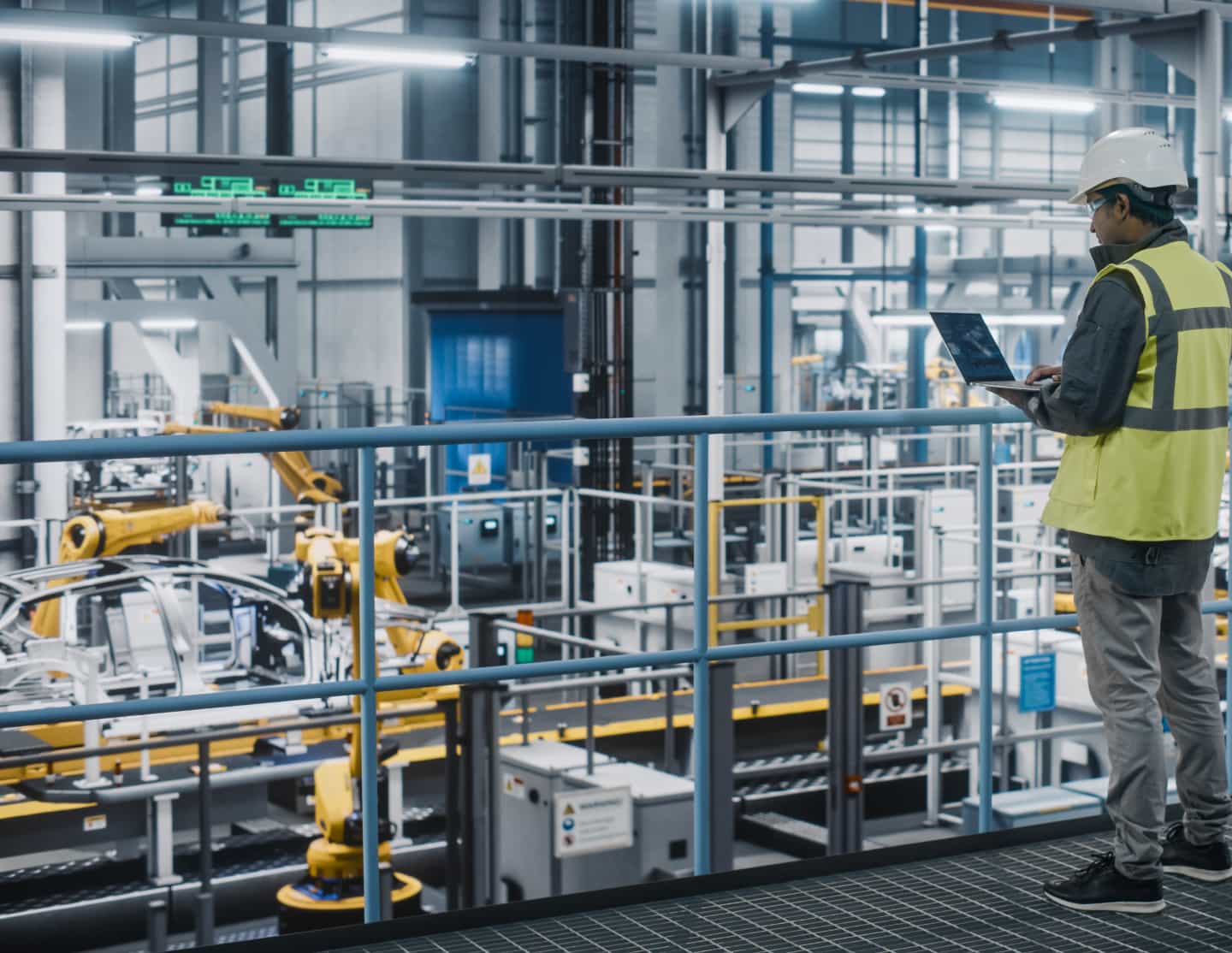Frequently Asked Questions
Right-sized Solutions to fit all complex environments
Filter By
LeveL5Cyber’s Risk Assessments enable organizations to inform and prioritize decisions regarding cybersecurity. The services take into consideration today’s evolving threat landscape to drive cybersecurity priorities with an outcome-driven approach using industry standard processes.
While timing can vary, most Assessments will take approximately five to six weeks to complete. Program Development services may take longer based on the scope.
The ISA/IEC 62443 series of standards define requirements and processes for implementing and maintaining electronically secure industrial automation and control systems (IACS). These standards set best practices for security and provide a way to assess the level of security performance.
Organizations that have already taken steps to segment their manufacturing environments may realize that firewall hardware does not have the same long life expectancy that some traditional OT assets have. Similarly, firewall vendors generally don't support platforms in perpetuity either. So what happens at the end of that roughly 4-6 year lifespan? As if the cyber threats that organizations face weren't enough, old and unsupported firewalls pose a significant risk of a different nature. What happens if there is a hardware failure and there is no replacement available? And what is the overhead on the organization, and the risk, to replace hundreds of firewalls that are nearing the end of their support - before that support contract expires? LeveL5Cyber specializes in global programs of this nature including firewall refreshes, regardless of the platform or vendor, as well as implementing new firewalls for organizations that may not have begun their segmentation journey yet.
Segmenting a network means dividing it into smaller, isolated parts. In manufacturing environments, where the protection of sensitive information and critical infrastructure is particularly important, segmenting the network can be an effective way to reduce the risk of a cyberattack.
After the completion of a segmentation project, there are several questions left to answer: Who do I contact if something is not working?; How do I know what rules are needed? How do I add new users / devices / functionality?; Can we expand our protected networks? These questions can leave the factory resources feeling overwhelmed. The team at LeveL5Cyber has decades of experience identifying gaps and developing custom solutions that will support your organization’s cybersecurity needs.
The LeveL5Cyber Acquisition Integrations consulting service is designed to provide cybersecurity guidance to reduce the exposure to an organization during high-stress and high-visibility situations. Optimally started in the Valuation Analysis stage, this service can also provide value during the Due Diligence stage of M&A activities. Potential areas of focus include a risk assessment, identification and protection of intellectual property, optimal architecture design, and conformance with corporate standards.
Where do we start? Often, we hear this question prior to doing assessments of enterprise Operational Technology (OT) cybersecurity postures. This is valid and at the forefront of any customer concerns. LeveL5Cyber approaches this topic by aligning your current capabilities and maturity with what can reduce the most risk. All gap recommendations are developed by seasoned operators to help produce strategic and tactical action plans that can be executed by internal resources and/or in combination with our team. It is important to keep in mind that cybersecurity programs and their associated risks change. This is where L5C brings value: Define the risks, Defend the assets.
Operational Technology (OT) firewall lifecycle management is essential to any enterprise cybersecurity program. This process includes planning, designing, implementing, maintaining, and monitoring firewall solutions in an industrial environment to ensure operational security and business continuity. OT firewalls help to protect against cyber-attacks, prevent unauthorized access, and secure industrial processes.
From an IT perspective, a typical Merger or Acquisition integration project will last for six months or more. During M&A activities, there are questions raised and challenges to overcome. System integration, compatibility, interoperability, vendor management, and network overlap are just a few of the obstacles you will likely face. The team at LeveL5Cyber has decades of experience managing cybersecurity aspects of Mergers, Acquisitions and Divestitures from start to finish.
Industrial control systems (ICSs) are an integral part of critical infrastructures, helping to facilitate operations in vital industries such as electricity, oil and gas, water, transportation, manufacturing, and chemical manufacturing. The growing issue of cybersecurity and its impact on ICS highlights fundamental risks to the Nation’s critical infrastructure. Efficiently addressing ICS cybersecurity issues requires a clear understanding of the current security challenges and specific defensive countermeasures. A holistic approach—one that uses specific countermeasures implemented in layers to create an aggregated, risk-based security posture—helps to defend against cybersecurity threats and vulnerabilities that could affect these systems. This approach, often referred to as Defense in Depth,
provides a flexible and useable framework for improving cybersecurity protection when applied to control systems.
A NIST Special Publication provides guidance on how to secure operational technology (OT) while addressing their unique performance, reliability, and safety requirements. OT encompasses a broad range of programmable systems and devices that interact with the physical environment (or manage devices that interact with the physical environment). These systems and devices detect or cause a direct change through the monitoring and/or control of devices, processes, and events. Examples include industrial control systems, building automation systems, transportation systems, physical access control systems, physical environment monitoring systems, and physical environment measurement systems.
A NIST Special Publication that provides recommended requirements for protecting the confidentiality of controlled unclassified information (CUI)
An information system used to control industrial processes such as manufacturing, product handling, production, and distribution. Industrial control systems include supervisory control and data acquisition systems used to control geographically dispersed assets, as well as distributed control systems and smaller control systems using programmable logic controllers to control localized processes.
A system established for the publication of uniform policies and procedures for acquisition by executive agencies.
The OT cybersecurity strategy: Refines and supplements guidance from the organization-wide risk management strategy to address OT-specific constraints and requirements; Identifies the OT cybersecurity team and personnel; Addresses the OT cybersecurity operation model (e.g., insource, outsource, and/or use managed security services); Outlines the appropriate cybersecurity architecture for the various OT sites within the OT program; Defines OT-specific cybersecurity training and awareness
A strong OT cybersecurity program is fundamental to a sustainable business operation and can potentially enhance system reliability and availability. This includes minimizing unintentional OT system information security impacts from inappropriate testing, policies, and misconfigured systems. Cyber-attacks can also have other significant impacts, such as: Physical impacts – Including personal injury and the loss of life. Other effects include the loss of property (including data) and potential damage to the environment, Economic impacts – A second-order effect of physical impacts that ensue from an OT incident, which in turn inflict a greater economic loss on the facility, organization, or others who are dependent on the OT systems. The unavailability of critical infrastructure (e.g., electrical power, transportation) can have economic impacts far beyond the systems that sustain direct and physical damage. Social impacts - Another second-order effect is the loss of national or public confidence in an organization.
Using strong passwords, updating your software, thinking before you click on suspicious links, and turning on multi-factor authentication are the basics of what we call “cyber hygiene” and will drastically improve your online safety. These cybersecurity basics apply to both individuals and organizations. For both government and private entities, developing and implementing tailored cybersecurity plans and processes is key to protecting and maintaining business operations. As information technology becomes increasingly integrated with all aspects of our society, there is increased risk for wide scale or high-consequence events that could cause harm or disrupt services upon which our economy and the daily lives of millions of Americans depend.
The CMMC is intended to serve as a verification mechanism to ensure that DIB companies implement appropriate cybersecurity practices and processes to protect Federal Contract Information (FCI) and Controlled Unclassified Information (CUI) within their unclassified networks. Many of LeveL5Cyber’s team members have come directly from this type of environment and understand the challenges that it presents. Our team will work with you to reduce risk and prepare you for a CMMC required audit.
Despite many benefits, technology presents significant security vulnerabilities to the life science enterprise. These vulnerabilities must be managed effectively to avoid existential threat to the enterprise, public health, and national security. Life science labs are in the early stage of transition to the “smart labs” of the future. While some life science enterprises may observe other cybersecurity best practices, life science organizations can be complacent about the security of their networked equipment, generally do not properly value their data and business information, and do not fully recognize the significant security vulnerabilities this information may reveal about their organization. The use of personal devices such as personal laptops and cell phones to access work-related systems results in duplication and redirection of work data streams that introduce additional vulnerabilities and increase the complexity of the cybersecurity challenges.
The Agriculture Sector is critical and vulnerable to cyberattacks, despite having no cybersecurity requirements for control systems used in the food manufacturing process. Ransomware, malware, or other attacks can lead to delays in shipping of perishable items, shortages of necessary product, or even health emergencies (crop manipulation). Disruptions to other sectors may have a direct impact on agriculture as well.
(Needs rewrite) Digital technologies have the potential to boost agricultural productivity to meet global food demand. Internet-enabled sensors allow farmers to gather vast amounts of real-time data on growing conditions, drought, and pest control that can inform future decisions. Many farmers in the countries where USAID works also rely on digital services to gain access to loans, sell their harvest, and set aside money that can help them resist shocks. However, with the obvious benefits of digital agriculture come new risks. Insecure or poorly designed digital agricultural devices or applications can be hacked, potentially exposing sensitive data—including Personal Identifiable Information (PII)—to cyber criminals or other malign actors.
Ransomware is an ever-evolving form of malware designed to encrypt files on a device, rendering any files and the systems that rely on them unusable. Malicious actors then demand ransom in exchange for decryption. Ransomware actors often target and threaten to sell or leak exfiltrated data or authentication information if the ransom is not paid. Ransomware incidents can severely impact business processes and leave organizations without the data they need to operate and deliver mission-critical services. Ransomware incidents have become more destructive and impactful in nature and scope. The economic and reputational impacts of ransomware incidents, throughout the initial disruption and, at times, extended recovery, have also proven challenging for organizations large and small.
Operational Technology (OT) networks are a fundamental for many industrial businesses as they provide the infrastructure for critical processes. However, these networks are vulnerable to cyberattacks, which may lead to costly disruptions and the loss of critical data. To protect OT networks, many organizations are turning to Network Segmentation to increase their overall security posture. The key purpose of network segmentation is to limit the access to critical systems and data. By segmenting the network, your organization can create a series of barriers thus restricting the movement of malicious actors and limit the potential attack surface. Network segmentation also provides operational efficiencies that can include increased network performance and reduced risk of outages.
As the world continues to advance technologically, more and more devices, namely IoT devices, are being connected to the Internet in order to increase efficiency and automation in various industries, including manufacturing. However, as we move towards a more interconnected world, it becomes increasingly important to consider the potential security threats that come with this level of connectivity. When it comes to OT and IoT devices in manufacturing environments, cybersecurity should be at the forefront. Cyber attacks on manufacturing networks can be costly, with consequences ranging from lost productivity to compromised data to a safety incident. These attacks can be particularly dangerous in the case of critical infrastructure and can cause widespread disruption and safety concerns if compromised.
As OT systems are increasingly being connected to IT networks, relying on traditional measures is not enough to protect such systems from cyberattacks. Organizations need to invest in security measures tailored to OT systems to best protect the organization’s OT assets. Investing in an OT cybersecurity strategy: Improves OT system safety, reliability, and availability; Improves OT system efficiency; Helps to meet regulatory requirements; Reduces the overall network attack surface. LeveL5Cyber's team of experts can leverage their years of hands-on experience to identify areas of risk, develop appropriate architectures, and build operational practices to combat today’s dynamic threat landscape.
At LeveL5Cyber, we offer advisory solutions that include network segmentation services for manufacturing environments. We deploy custom security solutions to reduce risk, provide granular control of traffic and network flows, and create micro-segmentation zones for optimal security. Our team understands the complexities of networks through decades of hands-on experience, so you can be sure our solutions are designed with the utmost attention to detail and built for maximum performance and security.
OT Network Segmentation remains crucial in limiting the propagation of malware. Some of the other benefits include: Reduced network congestion for ‘noisy’ applications (better performance), Limited blast radius for potential cyber-attacks (reduced lateral damage), Restricted access to key resources (less opportunity for ‘accidents’)
We offer optional Post-Segmentation Support Services for the newly inherited day-to-day requirements that sites may not be ready to take on. This may be the result of not having the cyber and networking skills optimally required or it may be site resources just don’t have time available to support the additional responsibilities. Regardless, our post-segmentation services may be a multiyear engagement or may just be needed just long enough to ramp up internally in order to bring the services in-house. Our team of experts stand ready to discuss your end-to-end factory segmentation needs and can provide the optional support to ensure not just a successful firewall implementation program, but a smooth transition to steady-state operations as well.
Ignoring the potential exposure introduced with a new IT ecosystem post-portfolio change can lead to increased risk of malware attacks, including ransomware, business email compromise and others. Additionally, acquisitions often include intellectual property (IP), which may have driven a premium in the cost. Misunderstanding and addressing the risks to the IP could lead to significant and rapid loss of value in an acquisition. Architectures and controls used to support mergers, acquisitions, divestitures, and joint ventures can be leveraged, saving costs, potentially reducing transition service agreement resources and improving efficiencies. Early and extensive understanding of the IT landscape will allow for appropriate funding and staffing expectations to meet synergy expectations. L5C has decades of experience working with F500 companies as they navigate these portfolio changes.
L5C is committed to providing "right-sized" solutions and recognizes a traditional assessment may not always be the appropriate starting point. A traditional, deep assessment can often give you controls to put in place that are not feasible without the right foundation. LeveL5Cyber offers an accelerated OT risk assessment designed for early-stage OT cybersecurity programs. We focus on the foundational controls first, providing the necessary building blocks to get you on the path to a mature cyber posture while reducing risk much sooner.
Operational Technology (OT) Firewall Lifecycle Management is key to a mature cybersecurity program. Our team at LeveL5Cyber has decades of hand-on experience successfully managing complex firewall projects for F500 companies from start to finish. We can help design and implement solutions that meet business-specific requirements.
With factory resources focused on keeping the factory running in an optimized state, they may not have the cyber expertise, or the time required to define the necessary firewall changes. Whether it's a knowledge gap or an availability issue, L5C's post-segmentation services were created to alleviate overhead, letting factory resources focus on what they do best: Keeping the factory running safely.
CUI is information the Government creates or possesses, or that an entity creates or possesses for or on behalf of the Government, that a law, regulation, or Government-wide policy requires or permits an agency to handle using safeguarding or dissemination controls. A CUI Registry provides information on the specific categories and subcategories of information that the Executive branch protects. The CUI Registry can be found at: https://www.archives.gov/cui and https://www.dodcui.mil/Home/DoD-CUI-Registry/.
Each organization's cybersecurity resources, capabilities, and needs are different. The time to evaluate and implement DFARS compliance will vary among organizations, ranging from as short as a few weeks to several years.
All DoD contractors that process, store, or transmit CUI must meet and maintain DFARS minimum security standards or risk losing their DoD contracts. Although there are no regulatory ties to how often a review of cybersecurity posture is required, baseline state should be evaluated at least annually.
An organization must complete a self-attestation of DFARS compliance, along with a completed System Security Plan (SSP) to continue doing work for the DoD when contracts include DFARS clause 252.204-7012. LeveL5Cyber’s DFARS-experienced team can assist your business leaders by identifying potential compliance gaps and supplying an actionable plan that is the foundation of the POAM. Our mature methodology can produce a repeatable process to measure ongoing improvements, along with the required SSP, and simultaneously provide a foundation and confidence for achieving CMMC certification.
Compliance with DFARS requirements protects DoD information from vulnerabilities when it is removed from secured storage. Any company with a DOD contract that includes a DFARS clause is at risk of losing their contract if they are not compliant.
The average cost of a cyber incident for the U.S. Pharmaceutical industry is significantly higher than other industries due to the level of collaboration for clinical trials and supply chain interdependencies. Additionally, the high amount of M&A often contributes to a higher security risk for the unknowing acquiring parent entity. LeveL5Cyber's team has decaddes of hands-on experience with Fortune 500 companies and stand ready to help protect our US Pharmaceutical industry from these ongoing threats.
Success in OT network security involves a holistic approach with extensive planning and communications. Collaboration with stakeholders, including process engineers and maintenance teams, makes a significant difference. Our experts have been doing global OT network segmentation programs for decades now and we know how to avoid the pitfalls.
According to BioPharma Reporter: There are over 1,200 US facilities producing FDA-approved products, with the highest concentration located in Massachusetts and California. Knowing a singular cyber-attack at one plant facility can quickly impact other facilities and cause significant operational disruption, safety and supply chain concerns is not new. However, our firm has been delivering manufacturing security for over 20 years, and possibly for some of your peers. LeveL5Cyber’s team can help identify your “most critical” plants and help secure them from external threats.
DFARS provides a set of security controls to safeguard information systems where DoD data resides. Based on NIST Special Publication 800-171 “Protecting Controlled Unclassified Information in Non-Federal Information Systems and Organizations”, manufacturers must implement these security controls through all levels of their supply chain.
Level5Cyber brings our years of F500 cyber experience to our customers with focus on providing value oriented, right-sized services. Our team has more than 100 years of combined cyber leadership experience across multiple business verticals, allowing our customers to benefit from the breadth of experience at an exceptional value
Consult Our Experts
your security is important
*denotes a required field





